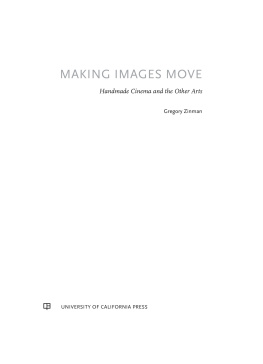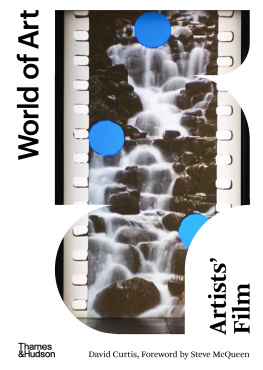0.1.
0.2.
0.3.
1.1.
1.2.
1.3.
1.4.
1.5.
1.6.
1.7.
1.8.
1.9.
1.10.
1.11.
1.12.
1.13.
1.14.
1.15.
1.16.
2.1.
2.2.
2.3.
2.4.
2.5.
2.6.
2.7.
2.8.
2.9.
2.10.
2.11.
2.12.
3.1.
3.2.
3.3.
3.4.
3.5.
3.6.
3.7.
3.8.
3.9.
3.10.
3.11.
3.12.
3.13.
3.14.
4.1.
4.2.
4.3.
4.4.
4.5.
4.6.
4.7.
5.1.
5.2.
5.3.
5.4.
5.5.
5.6.
5.7.
5.8.
5.9.
6.1.
6.2.
6.3.
6.4.
6.5.
6.6.
6.7.
7.1.
7.2.
7.3.
7.4.
7.5.
7.6.
7.7.
7.8.
7.9.
7.10.
7.11.
7.12.
7.13.
7.14.
7.15.
7.16.
8.1.
8.2.
8.3.
8.4.
8.5.
8.6.
8.7.
8.8.
8.9.
9.1.
9.2.
9.3.
9.4.
9.5.
ACKNOWLEDGMENTS
Writing this book was a pleasure, a struggle, an obligation, and a reward. It required the help, insight, and patience of many people and institutions that helped give it shape and sustenance over the course of many years. This project began as a PhD dissertation in the Department of Cinema Studies at New York University. My experience as a graduate student at NYU was first shaped by long conversations with the late Annette Michelson, for whom I served as a research assistant, and who was brilliant, and even ferocious, in her insights and opinions. My thesis developed most comprehensively thanks to the advising of Allen Weiss, whose exquisite taste and vast knowledge not only influenced my own, but provided me with both a model of iconoclastic thinking and the persistent reminder to pursue interests outside the narrow confines of academia. Other professors played important roles in cultivating my point of view. Richard Allen remains a persistent voice in my head while writing, and was one of my most engaged and feisty interlocutors as I developed my ideas. Dana Polan artfully demonstrates that one neednt pursue a single line of academic inquiry, and he remains exceedingly generous in his willingness to give professional and personal advice. The late Robert Sklar ran our cohorts dissertation seminar and provided a collegial environment to share work and accept criticism. I am especially grateful to the feedback of my fellow students in that groupPaul Grant, Jihoon Kim, Jinying Li, Priyadarshini Shanker, Dominic Gavin, Rebecca Miller Asherie, and Martin Johnsonfor their critiques, mutual support, and friendship. I relied greatly on the insights of Jonathan Walley, an outside reader whose advice I have continued to seek as this project has changed form, and whose friendship I continue to appreciate. I am likewise grateful to Noam Elcott, whose probing questions helped spur my thinking on ways to extend the notion of the handmade to other media. I was fortunate to take a seminar at Columbia University with Branden Joseph, who encouraged me to think hard about the meaning of the light show as a medium and practice. I am also deeply appreciative of my dear friend Will Georgantas, both for his willingness to copy edit my dissertation for free, but also for all of the record recommendations and good humor over these many years.
I relied on the kindness, knowledge, and hard work of people at institutions such as the Donnell branch of the New York Public Library, where I spent hours watching hard-to-see avant-garde works on 16mm and 8mm; the Thomas Wilfred papers at Yale University Library; and the Archives of the Museum of Modern Art, New York. Eugene and AJ Epstein provided many valuable insights into the art and methods of Thomas Wilfred, as did Keely Orgeman at Yale University Art Gallery.
This book was greatly enriched by several visiting-scholar positions that I was fortunate enough to secure. The first was a postdoctoral fellowship at the Smithsonian American Art Museum. I am grateful to Amelia Goerlitz, the museums fellowship and academic programs manager, as well as to my mentor and colleague John Hanhardt, who gave me the tremendous opportunity to spend the better part of a year researching the Nam June Paik Archive. Johns generosity, advice, and willingness to help cannot be understated. Particular mention must be made of the remarkable expertise of Christine Hennessey, SAAMs head of the Research and Scholars Center, and Hannah Pacious, collections coordinator for the Nam June Paik Archive. I am particularly indebted to my fellow fellows, Catherine Holochwost and Michael Maizels, for their generous and conscientious feedback and encouragement while conducting research and navigating the intricacies of interdisciplinary scholarship, as well as to Michael Mansfield, then the museums media arts curator, whose technical knowledge and friendship became sources of regular support. Ken Hakuta, executor of the Nam June Paik Estate, has been and continues to be unflaggingly supportive of my research. Jon Huffman, the estates curator, generously provided images, writings, and insights by and about Paik. The second position was an ACLS New Faculty Fellowship in the Film Department at Columbia University, where the collegiality and mentorship of Jane Gaines, Nico Baumbach, and Rob King were, and are continually, appreciated. During my time at Columbia I also had the pleasure of serving as the scholar in residence at the New York Film-Makers Cooperative under the direction of M.M. Serra, whose infectious love of experimental media extended offscreen to the people who make and support it.














